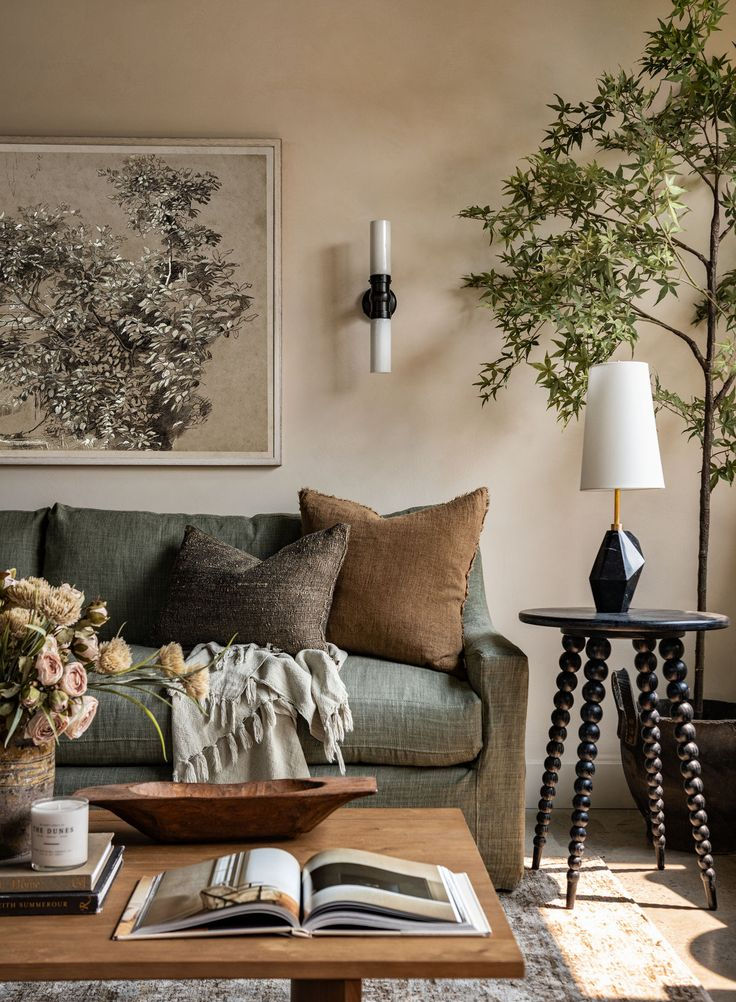How Interior Design Choices Can Influence Mental Wellbeing
- Jenny Kakoudakis

- May 19
- 4 min read
Interior design can do more than improve the aesthetics of your home. The right style can also help enhance your mental and emotional well-being. Creating spaces within your home that use a harmonious blend of colors and textures and take advantage of natural light can shape how you feel throughout the day.
That’s why it’s so critical to consider your choices when you’re redesigning a bedroom or kitchen. The right design decisions will lay the foundation for a better day.
Read on to learn how strong interior design choices can influence your well-being.

Design’s Role in Emotional Stability
Every detail that goes into designing a space can have an impact on how you feel. Even seemingly simple decisions, like the placement of a loveseat or the color of a throw rug, can influence your mood.
And lighting is among the most high-impact design elements with the potential to have a profound impact. Without enough light in an environment, it’s easy to feel depressed, tired, or anxious. Fortunately, some intentional design choices can prevent that problem.
Investing in a living arrangement that prioritizes aesthetic cohesion can be a positive step for individuals hoping to take control of their mental health. But it’s important to remember that, in some situations, design choices alone won’t offer enough support.
Therapists at Different MHP locations can help clients unpack the stressors in their lives and learn how to take control of their mood. Curated wellness plans and therapy sessions, alongside intentional interior design choices, can be game-changers for individuals as they embark on a wellness journey.
Harness the Power of Light and Color
Yes, light in just about any form can boost your mood. Introducing floor lamps in a dimly lit living room or pendant lights in a kitchen can be a positive move.
But harnessing the power of natural light is even more important. Carving out bigger spaces for windows can nudge your serotonin levels higher, which will help you feel more focused and happy.
Along the same lines, color can be a potent ally with the capacity to shape your emotional well-being. If you use colors that are too loud or saturated, you may even feel overwhelmed. Consequently, it’s critical to consider the emotional impact of colors and how scale affects the way you read them before buying a few gallons of paint to redo your walls.
For example, neutral colors are generally a safe bet when you want to create a calming atmosphere. Cream, taupe, and other warm tones will help you feel calm, clear, and steady. Similarly, blue paints can have a soothing effect, making them an ideal choice for bedrooms or offices.
If you do want a dose of intensity, then saturated oranges, yellows, and reds can check that box. But be mindful of how much you use brighter colors, as they can be overpowering in heavy doses. Consider limiting intense colors to accent pieces or art.

Consider Layout and Materials
If your space is overcrowded, cluttered, or poorly arranged, your mind can feel cluttered, too. Stuffing bulky furniture into a modest space, for instance, can make you feel claustrophobic.
Likewise, piles of clutter or a general sense of disarray can translate to disorganized thinking and irritability. Taking the time to create order within a room can help clear your mind.
Remove excess furniture and commit to weekly cleanings to help avoid the buildup of clutter. Create functional pathways through rooms so you’re not encountering roadblocks or tight spaces, and embrace a minimalist design sensibility to maximize space. You’ll feel more connected to your surroundings and appreciate the openness.
Living in a space with clarity can help your mind feel open, as well. Embrace clean lines and simple decor to maintain an environment that helps you function at your best.
Another strategy to help your mental well-being is to add a touch of nature to your indoor spaces. You can start small, with succulents or other houseplants, to help introduce verdant greenery and increase oxygen in the air. Step up the effort by introducing a plant cart or living wall in your kitchen for a more immersive effect.
Introducing other natural materials can help create a warm and inviting atmosphere, as well. Look into furniture made from natural wood with pronounced grains, or slate countertops in your bathrooms or kitchen. You’ll anchor your design in beautiful, natural materials that can help keep your stress levels at bay.
Make Intentional Design Choices
When you want your design decisions to have the best effect, take a whole-person approach. In other words, consider how your interior design decisions can support your productivity, sleep habits, and socialization. You can do this by selecting materials, furniture, and color schemes that promote physical and mental well-being.
To improve your sleep habits, craft a bedroom that makes sleep an inviting proposition. Paint your walls blue and use lights with dimmers to create a soft, nighttime vibe. Install blackout curtains if you sleep during times when the sun can be obtrusive. And choose a mattress and pillows with the right level of firmness or softness, and bed sheets that are soft and dreamy.
In your living room, arrange furniture to create conversation-friendly zones, especially if the space is larger. Arranging seating in an L-shape, for example, can encourage guests to sit and mingle. If space allows, place an accent chair near a window or fireplace as a cozy nook for reading or reflection.
Create a home office with ample natural light and supportive furniture so you can be efficient and comfortable at work. Blanket the walls with inspiring colors and add a bookshelf where you can display awards or family photos that will encourage you during the day. Remove any clutter that doesn’t inspire you or serve a practical purpose.
Make the Right Design Decisions
When you take the time to design your home with holistic wellness in mind, you’ll treat your mind and spirit to a better experience. Choose colors that inspire or soothe, and integrate natural materials into each room to bring a taste of the outdoors inside your home.
Remove clutter and develop layout patterns in each room that offer connectivity.
Ultimately, you’ll feel more relaxed each day if you feel supported by your physical environment.
Our writers like to find the latest trends for fashion and interiors. We launched the award-winning Seasons in Colour in 2015 and the luxury property and interior decor blog www.alltheprettyhomes.com in 2024 to cover all your interior design, travel and lifestyle inspiration needs. Download our free bathroom renovation guide here.


